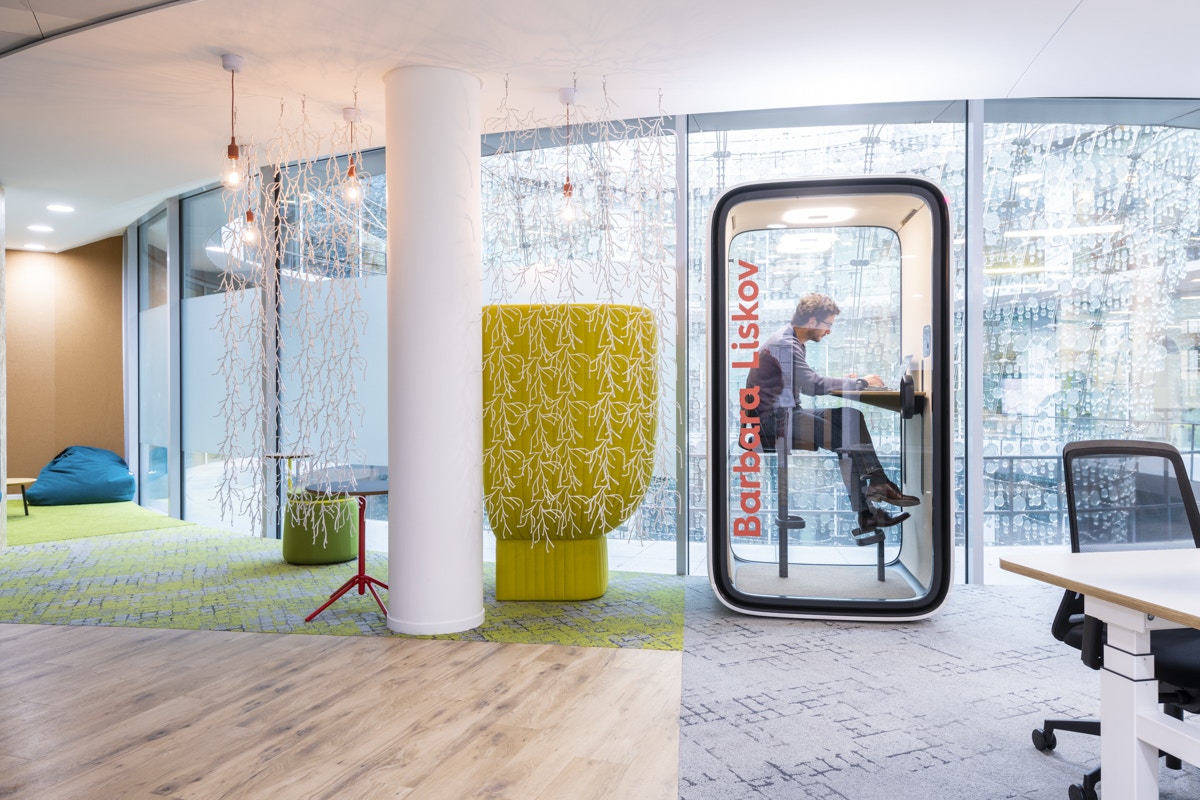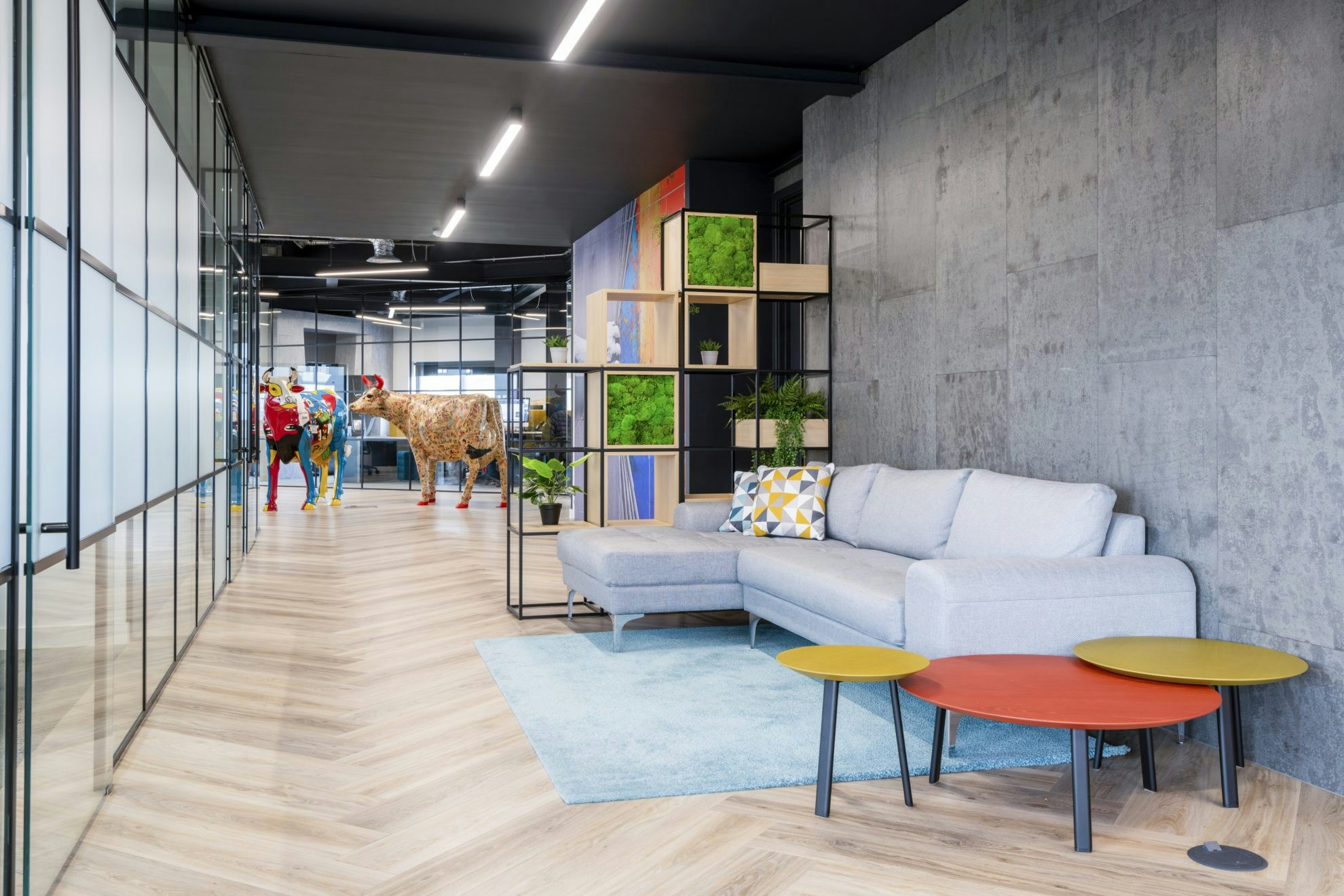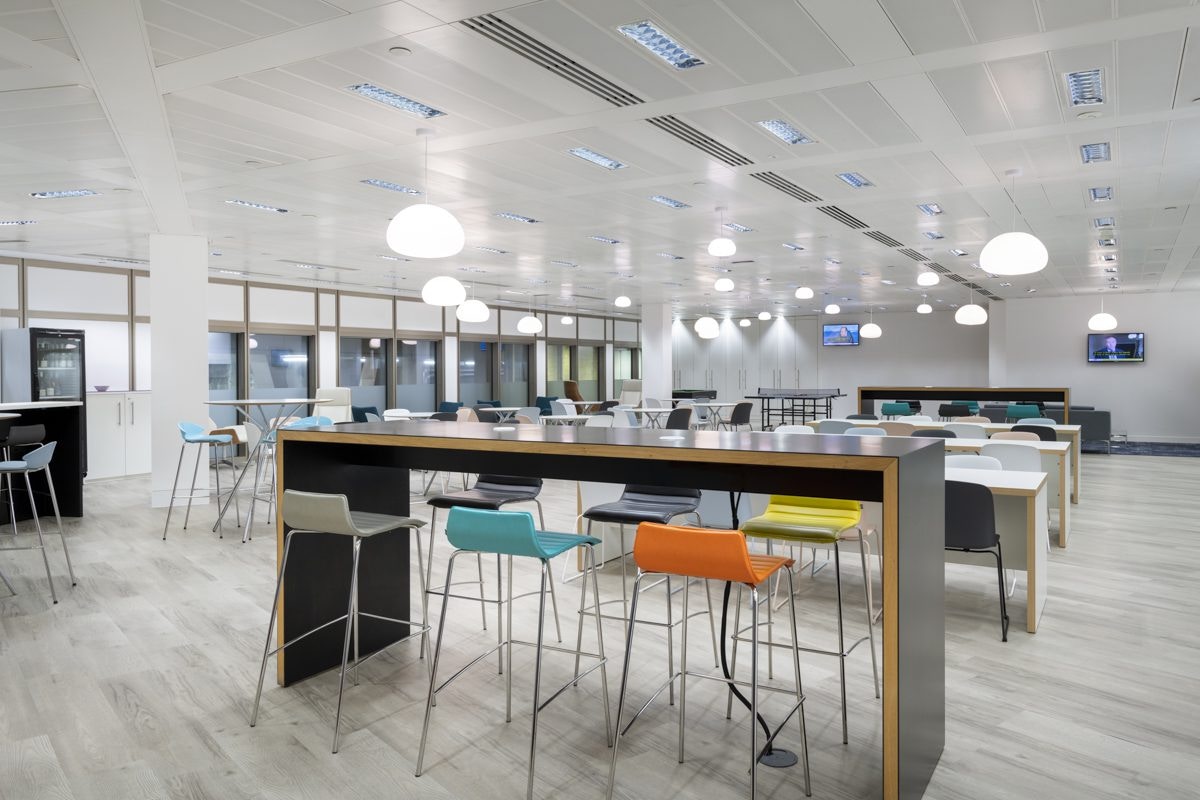Unique Needs of Media & Marketing
The UK media and marketing sectors are experiencing significant growth, with the advertising industry alone valued at £36.6 billion in 2023. This expansion has resulted in an increasing demand for office spaces that foster creativity, collaboration, and technological integration. A recent survey revealed that 70% of UK employees prefer hybrid working arrangements, highlighting the need for flexible office designs that accommodate both in-person and remote work. Additionally, the rise of digital media has led to a 15% increase in the requirement for advanced multimedia facilities within office environments. These trends show the importance of tailored office fit-outs and refurbishments to meet the evolving needs of media and marketing professionals.
In line with these trends, here are few considerations in designing workspaces for media and marketing companies:
1. Collaborative Spaces for Brainstorming and Teamwork
Media and marketing teams thrive on synergy and idea-sharing. Designing dedicated collaborative spaces, like open-plan areas, breakout rooms, and creative hubs, fosters a team-oriented environment that supports spontaneous brainstorming sessions. These spaces empower teams to gather quickly, share ideas, and problem-solve in real time, making the workspace itself a driver for innovation and teamwork.
2. Advanced Technology for Media Production and Marketing Analytics
A strong technological foundation is essential in these sectors, where content creation, media editing, and data analysis are routine. High-speed connectivity, reliable multimedia equipment, and integrated analytics tools are critical to enabling seamless media production, tracking marketing metrics, and facilitating communication with clients and remote teams. Purpose-built spaces with tech-ready infrastructure, such as video conferencing and media production studios, allow for smooth operations and efficient workflow.
3, Flexible Office Layouts for Changing Project Needs
Media and marketing projects often involve shifting team sizes, evolving client needs, and varying project scopes. Flexible office layouts, with movable partitions, reconfigurable desks, and adaptable seating, accommodate these changes seamlessly. This flexibility enables teams to adjust their workspace to suit project demands, whether it’s setting up for collaborative work, private client meetings, or individual focus time. An adaptable layout enhances efficiency and allows for an agile work environment that meets the unique needs of each project phase.
These design elements reflect the dynamic nature of media and marketing workspaces, creating a versatile and inspiring environment that supports productivity, collaboration, and technological integration.






